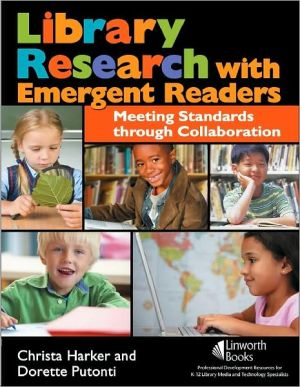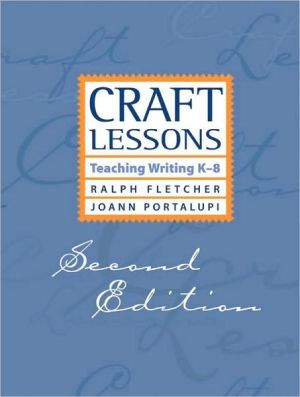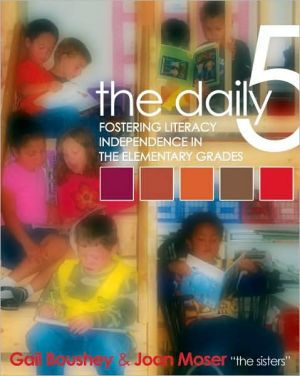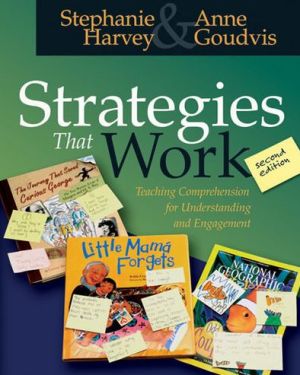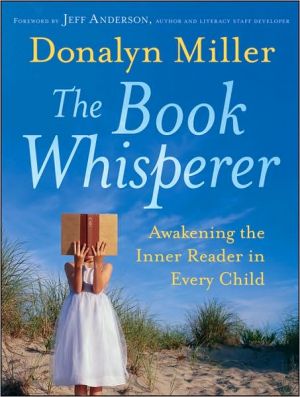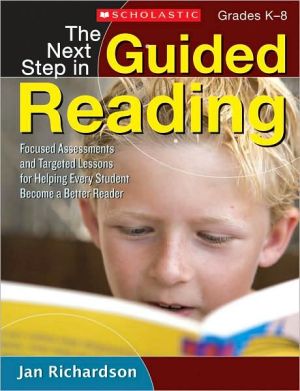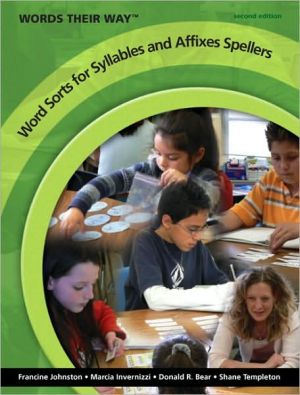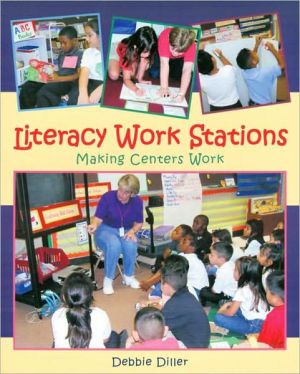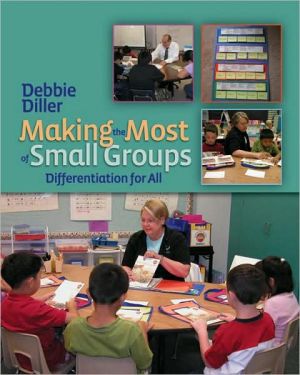Library Research with Emergent Readers: Meeting Standards Through Collaboration
Guide emergent readers through the library research process with this practical, hands-on manual specially targeted to librarians and K-1 classroom teachers.\ • Standards-based, step-by-step approach to research featuring the AASL Standards for the 21st-century learner\ • Focused on collaboration between the library media specialist and the classroom teacher\ • Employs research-based best practices for use with your young, emergent readers and writers\ • With the academic pressures of No...
Search in google:
Guide emergent readers through the library research process with this practical, hands-on manual specially targeted to librarians and K-1 classroom teachers. • Standards-based, step-by-step approach to research featuring the AASL Standards for the 21st-century learner• Focused on collaboration between the library media specialist and the classroom teacher• Employs research-based best practices for use with your young, emergent readers and writers• With the academic pressures of No Child Left Behind and other state mandates, a focus on emergent readers and library integration is a prime topic for today's library media specialistsThis book offers librarians and teachers hands-on research projects for emergent readers to help prepare students to meet challenging academic requirements. Targeted for media specialists and kindergarten and 1st grade classroom teachers who want to guide emergent readers through the library research process, this book provides background discussion and educational research on best instructional strategies, integrating curriculum standards, differentiating instruction, and step-by-step implementation of library research for emergent readers. Practical examples of library research units are the main focus of the manual. Find everything you need in this book to make your young students successful. School Library Journal Harker and Putonti, both experienced librarians, have produced a practical guide to providing students in the primary grades with a research experience. The first chapter gives the justification for attempting this feat, with emphasis on the opportunity such activities provide for teacher/librarian collaboration. Specific references as to how such research projects dovetail with AASL's "Standards for the 21st Century Learner" are given, as are examples from "Information Standards for Student Learning." The second chapter provides the step-by-step process that will insure success, with nine specific steps outlined in considerable detail. The remaining seven chapters include a variety of research projects that the authors have tested in their own library situations, each of which includes an overview, integrated content standards, and print and electronic resources. Appendixes provide assessment rubrics, collaborative checklists, and additional resources. An excellent tool for both novice and experienced librarians.-Grace Oliff, Ann Blanche Smith School, Hillsdale, NJ
\ From the Publisher"One of the first things that caught my eye as I began to look at this manual was the detailed ideas and worksheets to help librarians and teachers work together. The ways that research benefits emergent readers are also discussed, as well as how research at this level meets national standards. In addition, there are complete units with prepared handouts on animals, earth features, seasons, plants, community helpers, American symbols, and the five senses. They can be used as models for creating units on other topics. Included in the units are an estimated time needed to complete individual projects, detailed directions for their completion, and technology that could be used. There are self-assessment rubrics for students. The manual ends with additional resources that can be used when working with young students. I especially liked the effective ideas, like "prove it," where students are asked to point to a picture or line of text to show the teacher or librarian where they got their facts. A librarian and teacher can easily follow the guidelines in this manual to work together to create effective units for emergent readers. Recommended."\ -\ Library Media Connection\ "Harker and Putonti, both experienced librarians, have produced a practical guide to providing students in the primary grades with a research experience. The first chapter gives the justification for attempting this feat, with emphasis on the opportunity such activities provide for teacher/librarian collaboration. Specific references as to how such research projects dovetail with AASL's 'Standards for the 21st Century Learner' are given, as are examples from 'Information Standards for Student Learning.' The second chapter provides the step-by-step process that will insure success, with nine specific steps outlined in considerable detail. The remaining seven chapters include a variety of research projects that the authors have tested in their own library situations, each of which includes an overview, integrated content standards, and print and electronic resources. Appendixes provide assessment rubrics, collaborative checklists, and additional resources. An excellent tool for both novice and experienced librarians."\ -\ School Library Journal\ \ \ \ \ \ School Library JournalHarker and Putonti, both experienced librarians, have produced a practical guide to providing students in the primary grades with a research experience. The first chapter gives the justification for attempting this feat, with emphasis on the opportunity such activities provide for teacher/librarian collaboration. Specific references as to how such research projects dovetail with AASL's "Standards for the 21st Century Learner" are given, as are examples from "Information Standards for Student Learning." The second chapter provides the step-by-step process that will insure success, with nine specific steps outlined in considerable detail. The remaining seven chapters include a variety of research projects that the authors have tested in their own library situations, each of which includes an overview, integrated content standards, and print and electronic resources. Appendixes provide assessment rubrics, collaborative checklists, and additional resources. An excellent tool for both novice and experienced librarians.-Grace Oliff, Ann Blanche Smith School, Hillsdale, NJ\ \ \
